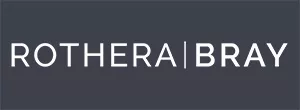- within Employment and HR topic(s)
- in United States
- within Media, Telecoms, IT, Entertainment, Law Department Performance and Intellectual Property topic(s)
- with Senior Company Executives, HR and Finance and Tax Executives
- with readers working within the Banking & Credit, Business & Consumer Services and Insurance industries
A knowledge of liability and how it applies to riding and training horses can be useful for both owners and professionals.
Are there 'golden rules' that riders should bear in mind when considering liability? Do they differ for amateur riders and those training or riding horses as a business?
Riding and working with horses carry inherent risks. Understanding liability is crucial, and the rules – whilst originating from the same source – will be applied in a different way to amateur enthusiasts and professionals respectively.
At the foundation of rider liability lies the concept of duty of care. Every rider, regardless of experience, owes a duty to act reasonably to prevent foreseeable harm to themselves and others. This duty is enshrined in common law principles and legislation such as the Occupiers' Liability Act 1957 and 1984. The Animals Act 1971 also applies strict liability to the keeper of a horse. This can include an owner or a person in possession of a horse.
Negligence arises when a rider breaches this duty, and that breach directly causes harm. To establish negligence, a claimant must prove:
- a duty of care existed
- this duty was breached
- the breach caused the harm suffered
- the harm was reasonably foreseeable
This baseline applies universally. However, the application of these principles differs substantially between amateur and professional riders.
For amateur riders, the courts generally acknowledge the inherent risks associated with equestrian activities. The courts generally accept that horses are unpredictable animals and will take this into account when assessing liability.
How do riders consider liability in terms of their general approach to riding and training their horses? For example, deciding whether to ride a particular horse on the road?
Riders should always have safety at the forefront of their mind when it comes to riding. Their own safety, the safety of their horse and the safety of others. If they know that a horse has a particular behavioural vice that would be likely to represent a hazard they should not expose others to that risk. As an example, if a horse is known to be afraid of large vehicles on the road and bolts when one approaches and the rider still chooses to continue to ride that horse on the road, that rider could face liability pursuant to the Animals Act 1971 and general principles of negligence.
Furthermore, in such circumstances your insurers may refuse to cover any claim.
Are there particular circumstances that bring liability more into question such as taking a young horse or a stallion to a show?
If you are aware of an increased risk, such as taking an unruly stallion to a show it is likely that you will be deemed to have breached your duty of care to others and that harm was reasonably foreseeable in the event that it causes damage.
What do businesses have to consider in terms of liability for injuries to staff, clients and horses in their care?
Firstly, businesses will need to be mindful of the fact that they owe a duty of care to their clients and employees.
Businesses should ensure that there is adequate insurance to cover all of these circumstances. Those businesses whose primary purpose is to provide livery for other people's horses, will need to ensure that the premises are adequate and maintenance is kept up to date.
As stated above, businesses should also use well-drafted contracts and waivers to define responsibilities and mitigate liability, but understand these do not completely remove liability.
From the other angle, what should horse owners do when they send a horse for training – are they required to make the trainer aware of any vices or of any traits which could mean that the horse poses a risk to others at shows?
It is vital that an owner always ensures that anyone riding or caring for their horse is aware of its vices.
It is advisable that this should be set out in a clearly drafted contract.
Where does the responsibility lie for wearing personal protective equipment?
Employers have a legal duty to provide and enforce the use of appropriate PPE for their employees. This includes helmets, body protectors, and other necessary equipment for yard duties, such as quad bike helmets, steel-toe boots, and gloves.
Employers should conduct a robust risk assessment for PPE for all activities involved in their role.
Employers should also provide adequate training and supervision to ensure that staff and clients receive proper training on the correct use and maintenance of PPE. It is also important that employers comply with relevant regulations including the Personal Protective Equipment at Work Regulations 1992 (as amended).
It is highly advisable for businesses to use well drafted contracts and waivers to define responsibilities and mitigate liability, but understand these do not completely remove liability. Businesses should also maintain safe premises and use qualified staff.
Golden rules for amateur riders
- Ride within your ability: avoid attempting manoeuvres beyond your skill level, especially in unfamiliar environments
- Maintain awareness: be vigilant of your surroundings, including other riders, pedestrians, other road users and potential hazards
- Ensure equipment is safe: regularly check tack and safety gear for defects
- Consider insurance: personal liability insurance is highly recommended to protect against unforeseen accidents
- Document everything: in case of an accident, keep detailed records of the incident, including photos and witness statements
Professional riders, trainers, and riding establishments face a significantly higher standard of care. Their expertise and the commercial nature of their activities place a greater burden of responsibility upon them.
Golden rules for professional riders and businesses
- Implement robust risk assessments: conduct thorough assessments of all activities and environments, identifying and mitigating potential hazards
- Provide training and supervision: ensure staff and clients receive appropriate instruction and supervision
- Maintain detailed records: document training, equipment maintenance, and incident reports
- Obtain comprehensive insurance: public liability insurance is essential to cover potential claims
- Comply with relevant regulations: adhere to all applicable health and safety legislation
- Vicarious liability: businesses are often held vicariously liable for the negligent actions of their employees
- Clear contracts and waivers: use well-drafted contracts and waivers to define responsibilities and mitigate liability, but understand these do not completely remove liability
- Maintain safe premises: ensure riding arenas, stables, and access paths are well-maintained and free from hazards
- Use qualified staff: ensure all instructors and staff are appropriately qualified and experienced
While the fundamental principles of duty of care and negligence apply to all riders, the practical application of these principles varies significantly. Amateurs must prioritise personal safety and ride responsibly, while professionals bear a greater burden of ensuring the safety of their clients and employees. Regardless of experience, understanding liability and adhering to these golden rules is essential for navigating the legal landscape of equestrian activities in England. This knowledge not only protects riders from potential legal repercussions but also fosters a safer and more enjoyable environment for all involved in the equestrian community.
The content of this article is intended to provide a general guide to the subject matter. Specialist advice should be sought about your specific circumstances.


